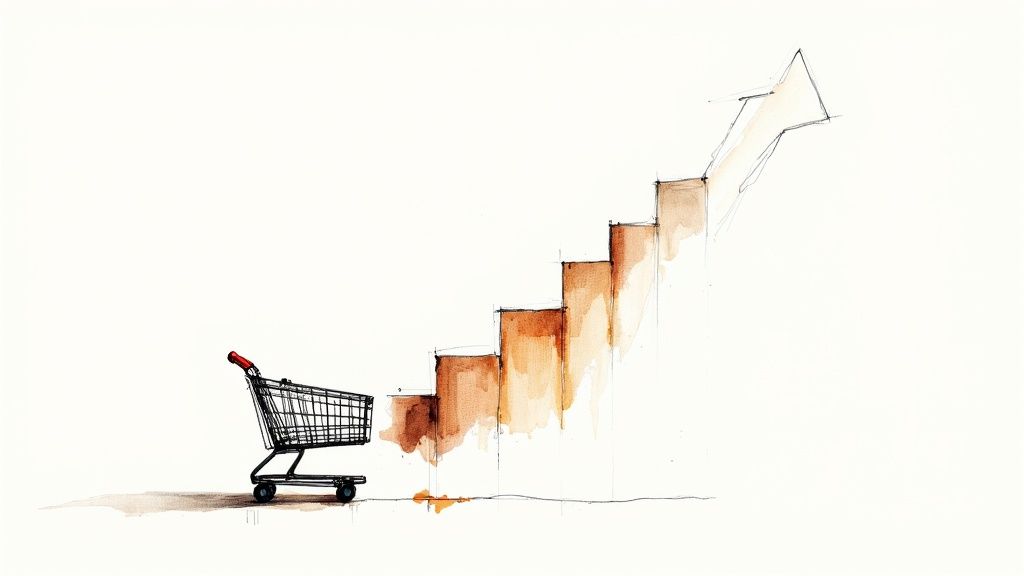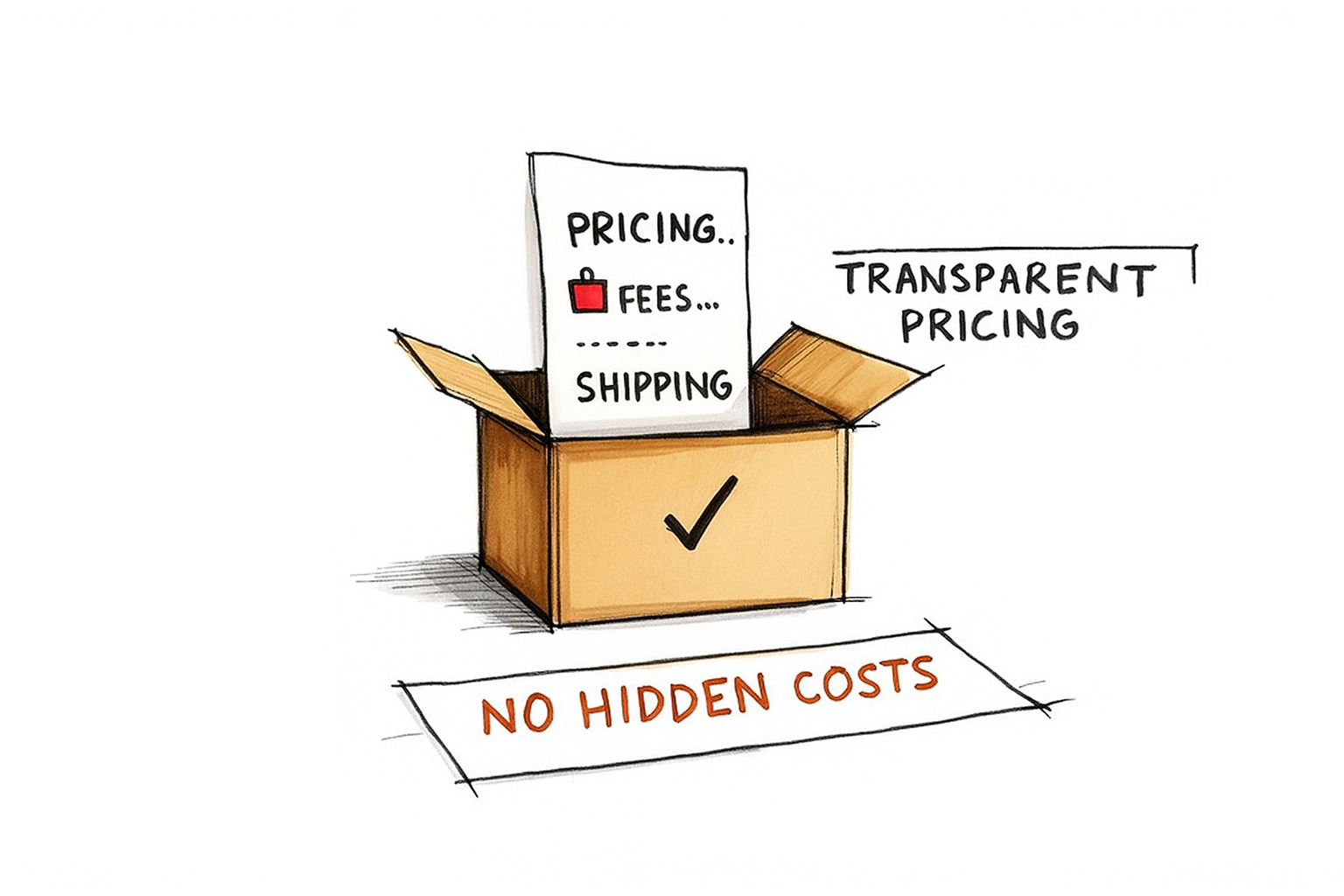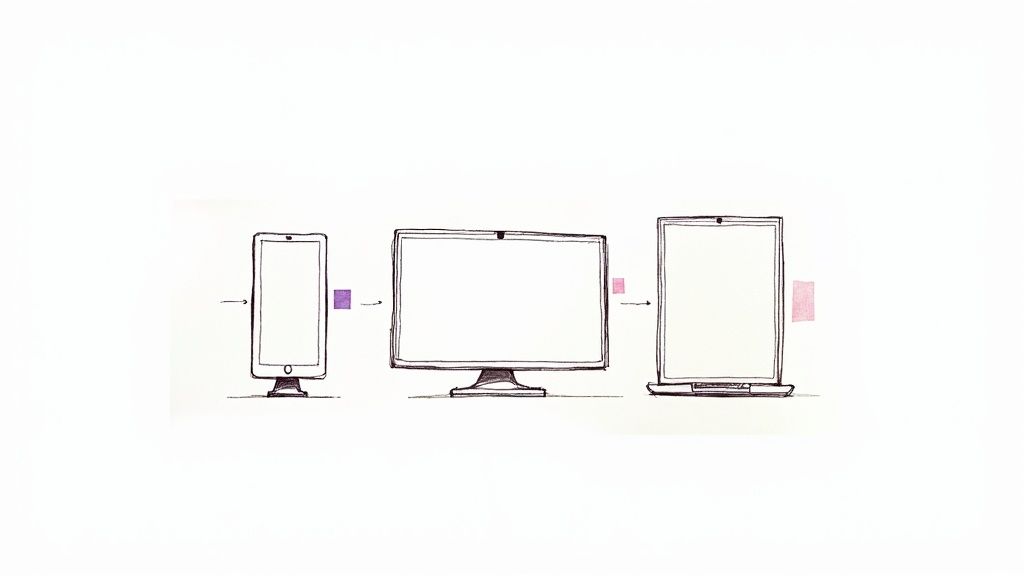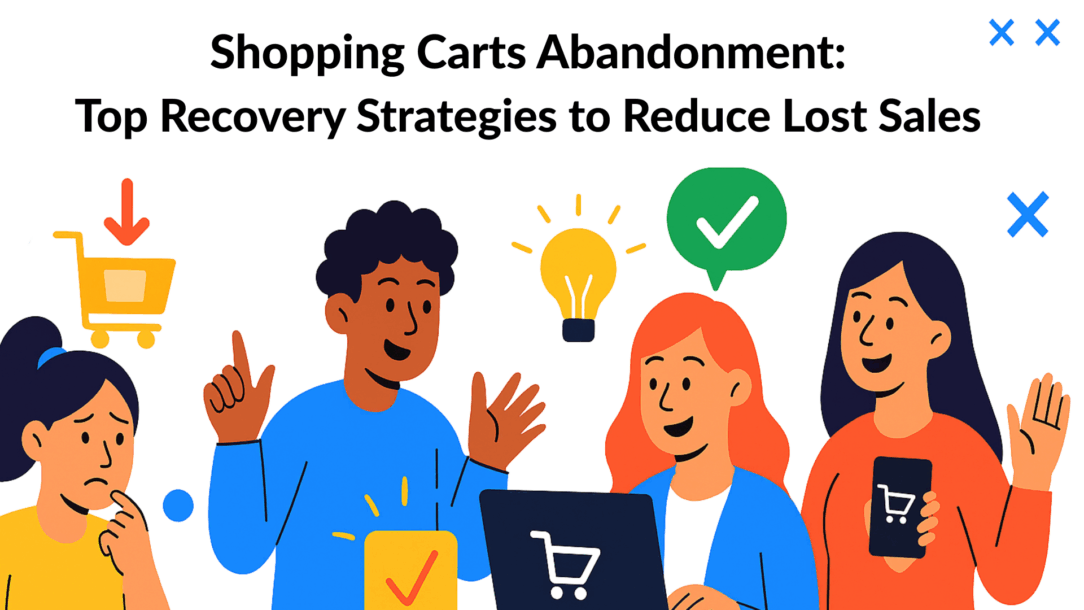We will talk about how to reduce cart abandonment in e-commerce. But first things first.
Do you know the shopping cart abandonment rate is significantly increasing in e-commerce, even more? Picture this — a shopper adds your product to the cart, hovers over the “Buy Now” button… and disappears. No sale. No clue. Just another lost opportunity.
It happens every minute, to every store — big or small. In fact, shopping cart abandonment is the silent profit killer most brands underestimate.
Why? Because it’s not about traffic. It’s about friction — too many steps, hidden costs, or just bad timing.
Worry not, you can reduce cart abandonment. Here’s the good news: every abandoned cart is a second chance waiting to be won.
The Hidden Opportunity in Abandoned Carts

opportunity in abandoned carts
It’s tempting to see an abandoned cart as a failure. A lost sale. But that’s the wrong perspective.
An abandoned cart isn’t a rejection. It’s a “maybe later.” It’s proof that someone wants what you’re selling—they just hit a snag before clicking “Confirm Purchase.” Viewing it this way changes everything. Instead of mourning a lost customer, you get to play detective and eliminate the friction that made them pause.
The scale of this “problem” is actually a massive opportunity. The average cart abandonment rate hovers between 70% and 76%. For every 10 shoppers who add an item to their cart, at least seven walk away as cart abandoners. This adds up to an estimated $4 trillion in lost sales annually. You can discover more about these cart abandonment statistics to grasp the full scope.
Key Takeaway: An abandoned cart is not a dead end. It’s a warm lead who showed clear buying intent. Your job is to find what stopped them and remove that barrier for good.
Unpacking the “Why” Behind Cart Abandonment Rates
To truly fix cart abandonment, you have to get inside your customer’s head. The issue is rarely the product itself; it’s almost always an unexpected obstacle in the final steps of their journey.
Let’s look at the data. The most common reasons shoppers leave are practical, not emotional. Here’s a breakdown of the top conversion killers and how to fix them, fast.
Top Ways to Reduce Shopping Cart Abandonment Rate
This table isn’t about theories; it’s a battle-tested cart abandonment solution for plugging the biggest leaks in your sales funnel. Each reason is a common frustration, and each solution is a direct, actionable step you can take today.
| Abandonment Reason | Immediate Actionable Solution |
|---|---|
| Surprise Costs (Shipping, Taxes, Fees) | Display an estimated total cost, including shipping and taxes, directly on the cart page. A zip code estimator is a perfect tool for this. |
| Forced Account Creation | Make “Guest Checkout” the most prominent, easiest option. You can always ask them to create an account after the purchase is complete. |
| Long or Confusing Checkout | Slash the number of form fields to the bare minimum. Use a progress bar to show them how close they are to being done. |
| Lack of Trust / Security Concerns | Prominently display trust badges (like SSL certificates and secure payment logos from Visa, PayPal, etc.) throughout the checkout process. |
Ultimately, your goal is to make buying from you feel effortless and safe. By tackling these core issues, you transform the checkout from a final hurdle into a seamless final step. This guide will show you exactly how to turn these problems into powerful conversion opportunities and reduce shopping cart abandonment.
Designing a Checkout That Converts Effortlessly
Your checkout flow process is the most critical part of your store. You’ve done all the hard work to attract a customer and get them excited about a product. This is where you close the deal. Yet, this is precisely where 26% of shoppers abandon their carts because the process is too long or confusing.
The best checkout experience is one your customer barely remembers. It should feel less like filling out a tax form and more like a quick, intuitive final step. Every extra field, every confusing question, and every unnecessary click introduces friction—giving your customer a reason to hesitate.
Think of it like the express lane at a grocery store. People use it because it’s fast, simple, and gets them on their way. Your online checkout needs to deliver that same feeling of effortless momentum.
Strip Down Your Forms to the Essentials
Your only goal here is to collect payment and shipping information. That’s it. This isn’t the time to survey customers on how they found you or ask for their birthday. Keep your forms lean, focused, and built for speed.
Here’s how to immediately reduce checkout friction:
- Implement Autofill and Address Prediction: Use tools like Google Places API to automatically suggest addresses as a customer types. This small feature saves time, reduces typos, and prevents frustrating shipping errors down the line.
- Clearly Mark Optional Fields: If a field isn’t 100% necessary, label it as “(optional).” Better yet, ask yourself if you really need it. If not, delete it.
- Use a Single Column Layout: A simple, top-to-bottom flow is far easier for the human eye to scan, especially on a mobile device. It feels less like a daunting wall of boxes and more like a simple to-do list.
Embrace the Power of Guest Checkout
Forcing a customer to create an account before they can buy is one of the biggest conversion killers. It’s a massive barrier right when they’re ready to pay. They might not want another password to remember or fear getting spammed with marketing emails.
Offering a prominent “Continue as Guest” option is non-negotiable. Research shows that 34% of shoppers will abandon a purchase if creating an account is mandatory.
You can always offer the option to create an account after the sale is complete. On the order confirmation page, a simple button that says, “Save your info for next time?” captures their details when the pressure is off. This respects their primary goal: completing the purchase quickly.
To ensure your checkout is seamless for all customers, consider improving user experience and sales through accessibility in e-commerce. A simple, accessible design isn’t just a compliance issue; it’s a powerful way to build trust and ensure everyone can buy from you without frustration.
Build Trust with Transparent Pricing and Shipping

transparent pricing and shipping
Let’s get straight to the point. The number one reason for cart abandonment isn’t a bad product or a clunky website—it’s sticker shock. It’s that sinking feeling a customer gets when their $50 cart mysteriously jumps to $68 on the final payment screen.
That last-second surprise fee isn’t just an inconvenience; it’s a breach of trust. When customers feel like you’ve tried to pull a fast one, they don’t just abandon that specific cart; they often abandon your brand for good. The solution isn’t to hide costs better—it’s to be radically transparent from the start.
Being upfront transforms the entire dynamic. The transaction becomes an honest conversation instead of a last-minute bait-and-switch. This is how you reduce your cart abandonment rates, stop losing sales and start building a base of loyal customers who trust you enough to come back again and again.
Eliminate Surprises with Upfront Shipping Costs
The most effective abandoned cart strategy to handle shipping costs is to show them long before the final checkout page. When customers know what to expect, they can make an informed decision without feeling trapped or tricked.
Here are a few proven ways to implement this right now:
- Set a Free Shipping Threshold: This is a classic for a reason. A simple banner at the top of your site that reads, “Free shipping on all orders over $75!” eliminates the surprise and encourages shoppers to increase their order value.
- Use a Real-Time Shipping Calculator: Place a simple tool directly on the cart page. Let shoppers enter their zip code to get an instant shipping estimate. This gives them control and transparency early on.
- Implement Flat-Rate Shipping: If your products are similar in size and weight, a simple flat rate like “$5 standard shipping on all orders” removes all guesswork and makes the total cost predictable.
Key Takeaway: Never make your customers do math at the last second. By showing shipping costs clearly and early, you treat them like a partner in the transaction, not a target for hidden fees.
Display All Taxes and Fees Clearly
Shipping isn’t the only culprit. Taxes, handling charges, or any other mandatory fees need to be visible from the get-go. Hiding them until the payment screen is a surefire way to spike your average shopping cart abandonment rate.
A simple yet highly effective tactic is to display an “Estimated Total” on the cart page itself. This figure should provide a clear breakdown of the subtotal, estimated shipping, and estimated taxes. It sets crystal-clear expectations and builds the trust needed to make the final checkout steps feel safe and predictable.
This level of transparency also simplifies your customer support. When pricing is clear, there are fewer support tickets about “surprise” charges. It’s a key part of a broader customer service strategy, which you can learn more about in our guide to omnichannel customer service.
Optimizing The Shopping Experience For Every Device

optimized experience for all devices
Let’s be blunt: a frustrating mobile experience is no longer just a minor annoyance — it’s a major loss in revenue. With mobile commerce dominating the landscape, every extra click or delay adds up. If customers abandon carts because they have to pinch, zoom, or fight tiny buttons, your cart abandonment rate will tell the story loud and clear. Remember, cart abandonment rate is calculated by dividing the number of completed purchases by the total number of initiated checkouts — and when that number drops, it’s a red flag that friction is costing you real money.
The numbers don’t lie. Mobile phones have the highest cart abandonment rate of any device — 75.5% — more than 5% above the average. That’s not just a statistic; it’s a wake-up call. Each abandoned cart represents lost intent, lost trust, and lost money. The opportunity lies in identifying where that friction starts and building an abandoned cart flow that smartly brings users back into the funnel before they’re gone for good.
A mobile-first approach isn’t just a design philosophy anymore — it’s a growth strategy. By streamlining the mobile checkout experience, optimizing form fields, and testing every tap, you turn abandoned carts into completed sales. In short, removing mobile friction doesn’t just improve user experience — it directly reduces cart abandonment and recovers lost revenue at scale.
Creating A Frictionless Mobile Checkout
A great mobile checkout doesn’t just happen by accident. It’s meticulously designed to anticipate the user’s needs and make the path to purchase feel completely effortless. It’s about proactively removing hurdles, not just shrinking a desktop page.
Your goal? Make buying something on a phone faster and easier than getting off the couch to find a wallet.
Here’s how to make your mobile checkout process shine:
- Implement One-Tap Payments: This is non-negotiable in today’s market. Integrate digital wallets like Apple Pay and Google Pay. They securely store all shipping and payment information, letting customers check out with a single tap or fingerprint. It’s the ultimate friction-killer.
- Design for Thumbs: All your buttons, links, and form fields need to be large and easy to tap. Keep key navigation elements within the “thumb-friendly zone” at the bottom of the screen.
- Keep Forms Minimalist: On a small screen, every form field feels like a chore. Use address autofill wherever possible and collapse optional fields to keep the interface clean and focused on the essential steps.
Key Takeaway: Stop thinking of your mobile site as a smaller version of your desktop site. Treat it as the primary shopping experience for the majority of your customers, because it is.
The data is crystal clear: shoppers behave differently on different devices. Optimizing for just one screen means you’re leaving money on the table.
Average Cart Abandonment Rate by Device and Recommended Optimizations
| Device Type | Average Abandonment Rate | Top Optimization Strategy |
|---|---|---|
| Mobile | ~85% | Simplify checkout with one-tap payments (Apple Pay/Google Pay) and minimalist forms designed for thumb navigation. Speed is critical. |
| Tablet | ~80% | Focus on a touch-friendly UI with large, clear product images and easy-to-tap buttons. Balance visual appeal with simple navigation. |
| Desktop | ~73% | Offer detailed product comparisons, comprehensive information, and a guest checkout option. Ensure trust signals are prominent. |
By tailoring the experience to the device, you meet customers where they are and make it incredibly easy for them to complete their purchase, no matter how they choose to shop.
Tailoring Abandoned Cart Recovery Strategies To Shopping Behavior
How people shop also varies by industry, and your strategy must reflect that. A customer buying a $2,000 piece of jewelry behaves very differently from someone stocking up on shampoo.
For instance, high-consideration sectors like jewelry (81.68% abandonment) and home furnishings (78.65% abandonment) involve more research. On the flip side, industries like fashion or cosmetics often see more impulse buys. To get a better sense of how these rates differ, you can explore detailed benchmarks on industry cart abandonment.
This means your mobile experience needs to be tailored. For high-ticket items, your site must make it easy to save carts, create wishlists, and compare products. For fast-moving consumer goods, the entire focus should be on speed and one-click purchasing. By aligning your user experience with customer intent, you create a path to purchase that feels natural and intuitive.
Winning Back Sales with Smart Recovery Campaigns
Lets talk about abandoned cart recovery strategies now! You see, it’s not a lost sale. It’s a high-intent lead who got distracted or had a last-minute doubt. This is your prime opportunity to re-engage, and a well-timed cart abandonment recovery campaign is your best tool for the job.
Forget generic “You left something!” messages. A smart recovery sequence feels like a helpful reminder, not a desperate plea. It uses a mix of abandoned cart email and SMS to reach customers where they are, gently nudging them back to complete their purchase. This isn’t about a single email; it’s about an automated, multi-step conversation.
The data here is compelling. Cart abandonment emails have an impressive conversion rate, i.e., 39.07% open rate and a 23.33% click-through rate.
But the real magic is in the follow-up. Campaigns that send a sequence of three emails generate significantly more revenue than those that send just one. We’re talking a difference between $24.9 million and $3.8 million. That gap proves that a persistent, strategic follow-up is everything.
Building Your Automated Recovery Sequence
An effective recovery campaign is a multi-touchpoint strategy. It should start within an hour of abandonment and continue over a few days via email and SMS for maximum impact. Each message in the sequence should have a clear purpose.
Here’s a proven three-step structure that works:
- Email 1 (Sent After 1 Hour): The Gentle Nudge: This first email is a simple, friendly reminder. The subject line should be helpful, like “Did you forget something?” or “Your items are waiting.” Include high-quality images of the exact products they left behind. The goal is pure assistance—maybe their internet cut out or they got pulled into a meeting.
- Email 2 (Sent After 24 Hours): Address a Common Objection: Now it’s time to be strategic. We know that unexpected costs are a huge reason for abandonment, so this is the perfect time to offer a small incentive. A subject line like “A special offer for your cart” can work wonders. Offering a modest discount (10% off) or free shipping can be the final push they need.
- SMS Message (Sent After 48 Hours): The Final Reminder: SMS is direct, personal, and has incredibly high open rates. A short, concise text message is a powerful final touch. Try something like: “Still thinking it over? Your cart from [Your Brand Name] is about to expire. Complete your order here: [Link]”. This creates urgency without being aggressive. For more ideas, check out these key benefits of automated text messages.
Key Takeaway: The power of a recovery campaign is in the sequence. A single email is easy to ignore. A thoughtful, multi-step follow-up across different channels shows you’re paying attention and makes it incredibly easy for the customer to pick up where they left off.
For more advanced tactics, you can explore using AI to launch ads to create highly personalized retargeting campaigns that reach customers far beyond their inboxes. You see, cart abandonment is a major concern in every industry. By automating these smart sequences, you build a reliable system that consistently turns almost-lost sales into loyal customers.
Your Cart Abandonment Questions Answered
We have talked about ways to reduce online shopping cart abandonment and increase conversions. Now, let’s discuss the major questions everyone has in their mind.
When you’re fine-tuning your cart recovery marketing strategies, a few key questions always come up. Getting these details right is often the difference between a campaign that flops and one that brings customers flocking back.
Let’s tackle some of the most common sticking points, from timing your messages to the great discount debate.
When Is the Best Time to Send a Recovery Email?
Timing is everything. If you wait too long, your customer has already moved on—maybe to a competitor’s site, or they’ve simply forgotten what they were excited about in the first place.
The magic window for your first follow-up email is within one hour of the cart being abandoned.
Think of this first email as a gentle, low-pressure nudge. The purchase intent is still fresh. Perhaps their child started crying, their boss called, or their Wi-Fi dropped. A quick reminder at this moment is often all it takes to capitalize on that initial excitement before it fades.
Do I Always Have to Offer a Discount?
Every e-commerce business thinks about it. No, and you probably shouldn’t. It is about how effective the email marketing campaigns you are running are. While a well-placed coupon discount code can certainly close a sale, offering discounts in every abandonment email is a fast way to destroy your profit margins. Worse, it trains customers to abandon carts on purpose, knowing a 10% off coupon will land in their inbox.
Instead, save your discounts for later in your recovery sequence. Your first email should be a simple, helpful reminder. If they still haven’t returned after 24 hours, then you can introduce a small incentive like free shipping or a modest discount. It’s a much smarter way to protect your margins while giving hesitant shoppers a reason to act.
You need a proper strategy to run and manage abandoned cart email campaigns
Key Takeaway: Think of discounts as your closing argument, not your opening line. Use them strategically to overcome the final hesitation for the toughest customers, not as a blanket solution for everyone.
How Many Follow-Up Emails Are Too Many?
One email often gets lost in a crowded inbox, but sending a dozen is just annoying. The sweet spot for most brands is a sequence of two to three messages spread over a few days. You can utilize pre-built email templates that specifically address this core issue — reminding shoppers, creating urgency, and showcasing value.
This balanced approach gives you multiple opportunities to re-engage without becoming a pest. It’s a tested way to reduce abandonment and steadily improve your cart recovery rate over time. Here’s a simple, effective structure:
- Message 1 (after 1 hour): A simple, helpful reminder. “Did you forget something?”
- Message 2 (after 24 hours): Time to tackle a common pain point. Offer free shipping or highlight your easy returns policy.
- Message 3 (after 48-72 hours): Create a little urgency. A “Your cart is about to expire” or “Items are selling out!” message can be incredibly effective.
This cadence gives you multiple chances to bring them back, with each message offering a fresh angle to reignite their interest. Abandonment is a major loss — not just in sales, but in trust and momentum. So, in my opinion, there can be multiple ways to reduce shopping cart issues, but it ultimately depends on how effectively you are running your campaigns.
Conclusion
Reducing cart abandonment is crucial for retailers looking to enhance their online shopping experience and recover lost sales. When you implement the following strategies, such as offering multiple payment options and streamlining the checkout process, you can significantly improve checkout completion rates.
Utilizing analytics can help identify where cart abandonment occurs, allowing you to address potential technical problems on your e-commerce site.
Social proof and clear order summaries can boost consumer confidence, while reminder emails and enticing promo codes serve as effective tools in encouraging online shoppers to complete their orders. Remember, every abandoned cart represents potential lost sales, so make it a priority to analyze your product pages and optimize the entire cart and checkout experience.
Related Posts



